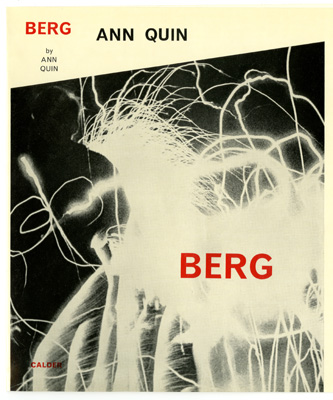
At Easter-time 2010 I made a research trip to the Lilly Library at Bloomington, all the way from the University of East Anglia in the U.K., to read papers contained in the Calder and Boyars manuscript collection concerning my PhD subject, the British writer Ann Quin (1936–1973).
With trembling fingers, I sat in the reading room at the Lilly and opened the first box. Quin’s surviving papers are rare, and working with the papers held at the Lilly Library was my first experience of reading and handling her papers at first hand. What I found were a collection of letters and papers that not only charted the story of Quin’s professional career, but also revealed much about her personally. These letters, between Quin and her publishers, John Calder and Marion Boyars, reveal her to have been very anxious about money, demanding, difficult, sporadic, impulsive, and seeking stability. In the letters, her tone is at times, not so much inappropriate, as overly personal, the letters mix detailed discussion of matters to do with the printing of this or that novel, or of issues surrounding what royalties are owed etc, with newsy descriptions of and responses to place, as well as revelations about personal feelings. The tone and composition of these letters expose much about her as a person, and the corresponding responses by her publishers give Quin’s comments a context that has provided me food for thought: she does not always emerge in a pleasant or professional light, and this has aided my thinking about her relationship with her work as well as the people around her. The letters are also revealing in their charting of her ongoing and increasing lack of commercial success, from the frustrations brought by the endless soliciting of the short stories by Boyars, to repeated rejections by foreign publishers.
Many of the letters confirmed what I had already suspected, but some brought unexpected and surprising things to light. Of course, the collection not only contains letters by or directly responding to Quin, but also ones about her. From these, I gleaned vital information about periods of her life when she was suffering from increasingly severe bouts of mental illness and both her fiction and letter writing ground to a halt. It was fascinating to know, for example, that her novels were requested and put forward as evidence to a Doctor treating Quin after one serious breakdown in 1970.
Working with the letters has provided my project with the depth of knowledge and understanding crucial for developing a more sensitive eye when drafting my interpretations of Quin’s fiction. I find echoes of the letters in her fiction, and this conversation between her life and work is something that my experience of visiting the archive has allowed to become an integral part of my project. I am grateful to the Lilly Library not only for providing me the opportunity of reading such papers, but also for their generous financial support of the Ernest Everett Helm Visiting Fellowship which made the trip possible.
—Nonia Williams Dodd, University of East Anglia